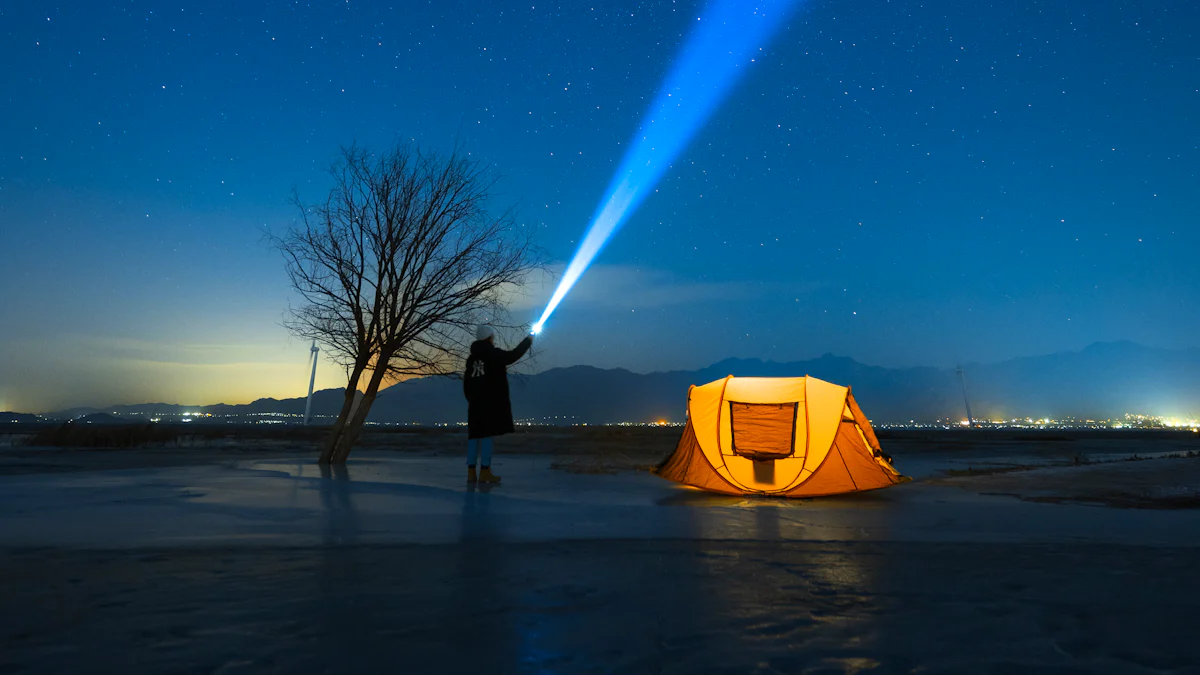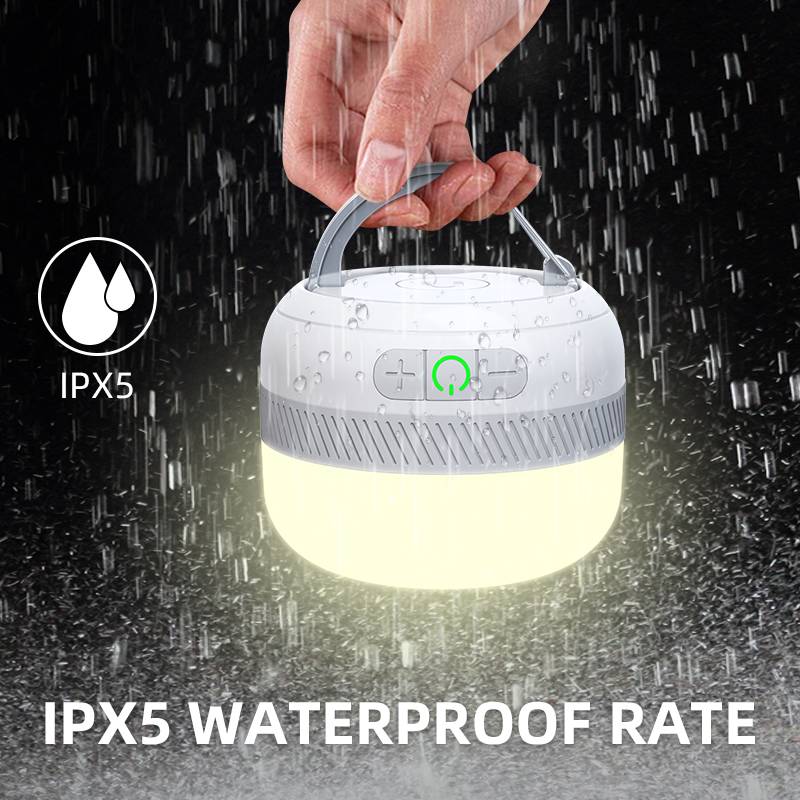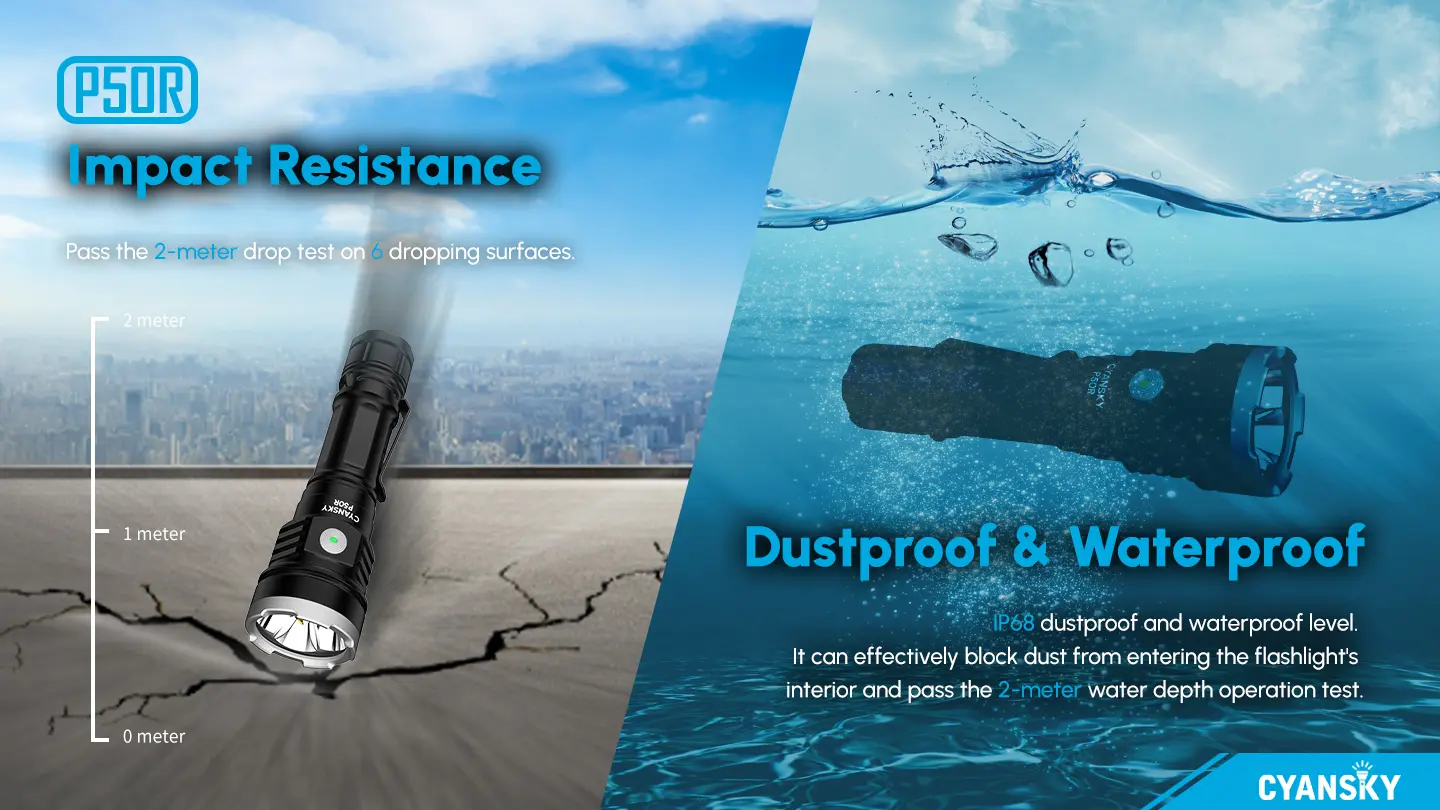Understanding Flashlight Waterproof Ratings

When you choose a flashlight, understanding waterproof ratings becomes crucial. These ratings ensure your flashlight performs well in various conditions. Whether you're hiking, camping, or facing an emergency, a water resistant flashlight can be a lifesaver. Outdoor enthusiasts and professionals alike rely on these tools. The demand for durable, reliable flashlights continues to grow, especially in challenging environments. Knowing the difference between a flashlight waterproof and a water resistant flashlight helps you make informed decisions, ensuring safety and functionality when you need it most.
What Are Flashlight Waterproof Ratings?

Definition and Importance
Explanation of waterproof ratings
Flashlight waterproof ratings indicate how well a flashlight can resist water penetration. These ratings help you understand whether a flashlight can withstand rain, splashes, or even submersion in water. The ratings are crucial for ensuring that your flashlight performs reliably in wet conditions. A water resistant flashlight might handle light rain, while a flashlight waterproof to a higher degree can survive being dropped in a stream.
Importance for different environments and uses
Different environments demand varying levels of water resistance. If you enjoy outdoor activities like hiking or camping, you need a flashlight waterproof enough to handle unexpected weather changes. For fishing trips, a flashlight with an IPX7 or IPX8 rating ensures it continues to work even if it falls into the water. In emergency situations, having a reliable water resistant flashlight can be a lifesaver, providing light when you need it most.
How Are Waterproof Ratings Determined?
Overview of testing procedures
Manufacturers determine waterproof ratings through rigorous testing. Common methods include IPX Testing, Pressure Testing, and Submersion Testing. These tests simulate environmental conditions to assess a flashlight's resistance to water ingress. For instance, submersion testing involves immersing the flashlight in water to see if it remains functional. Rubber gasket sealing is another technique used to prevent water from entering the flashlight.
Standards and organizations involved
Several standards and organizations oversee the testing and certification of waterproof ratings. The IP Code, or Ingress Protection Standards, provides a systematic way to classify the degree of protection against water. Organizations ensure that flashlights meet these standards, giving you confidence in their water resistance capabilities. By understanding these ratings, you can choose a flashlight waterproof enough for your specific needs, ensuring reliability and safety in any situation.
Understanding IPX Ratings
What Does IPX Stand For?
The term IPX refers to the International Protection rating, which indicates a flashlight's resistance to water. The "IP" stands for Ingress Protection, while the "X" signifies that the device hasn't been tested for solid particle protection. Each digit following "IPX" represents the level of water resistance.
Breakdown of the IPX acronym
IP: Ingress Protection
X: Not tested for solids
Digit: Water resistance level
Explanation of each digit in the rating
The digits in an IPX rating reveal how well a flashlight can withstand water exposure:
IPX1: Protection against dripping water.
IPX4: Splash resistant from any direction.
IPX7: Submersible up to 1 meter for 30 minutes.
IPX8: Submersible beyond 1 meter, with specific conditions set by the manufacturer.
Common IPX Ratings for Flashlights
Understanding these ratings helps you choose the right flashlight waterproof for your needs.
IPX4: Splash resistant
An IPX4-rated flashlight is weatherproof. It can handle splashes from any direction, making it suitable for light rain or moisture exposure. This rating ensures the flashlight remains functional when exposed to elements like rain, but it shouldn't be submerged.
IPX7: Submersible up to 1 meter
Flashlights with an IPX7 rating can be submerged in water up to 1 meter deep for 30 minutes. This makes them ideal for activities near water, such as fishing or boating. You can rely on these flashlights to perform in wet conditions without damage.
IPX8: Submersible beyond 1 meter
An IPX8 rating indicates superior waterproofing. These flashlights can withstand continuous immersion beyond 1 meter, depending on the manufacturer's specifications. They are perfect for more demanding environments where prolonged water exposure is possible.
Choosing the right water resistant flashlight involves understanding these IPX ratings. Whether you need a flashlight waterproof for outdoor adventures or emergencies, knowing these ratings ensures you select a reliable tool for any situation.
Choosing the Right Flashlight Based on Waterproof Ratings

Assessing Your Needs
When selecting a flashlight, you must first assess your specific needs. Consider the environment and usage scenarios where you plan to use the flashlight. For instance, if you often find yourself in wet or rainy conditions, a water resistant flashlight might suffice. However, for activities like fishing or kayaking, you should opt for a flashlight waterproof with a higher rating, such as IPX7, such as IPX7 or IPX8. These ratings ensure the flashlight can withstand immersion in water for a specified time without losing functionality.
Consideration of environment and usage
Outdoor Adventures: If you enjoy hiking or camping, a flashlight waterproof enough to handle unexpected weather changes is essential. An IPX4 rating might be suitable for light rain, while IPX7 or IPX8 ratings are better for more extreme conditions.
Water-Based Activities: For activities near or in water, such as fishing or boating, choose a flashlight with at least an IPX7 rating. This ensures it remains functional even if submerged up to 1 meter for 30 minutes.
Matching ratings to specific activities
Casual Use: For everyday tasks or occasional outdoor use, a water resistant flashlight with an IPX4 rating may be adequate.
Professional Use: In professional settings where reliability is crucial, such as search and rescue operations, a flashlight waterproof with an IPX8 rating offers superior protection against prolonged water exposure.
Practical Tips for Selection
Choosing the right flashlight involves more than just understanding waterproof ratings. You should also evaluate additional features and balance cost with functionality to ensure you get the best value for your needs.
Evaluating additional features
Durability: Look for flashlights made from robust materials that can withstand harsh conditions. A durable flashlight waterproof to a high degree will serve you well in challenging environments.
Battery Life: Consider the battery life, especially if you plan to use the flashlight for extended periods. A long-lasting battery complements the waterproof features, ensuring the flashlight remains reliable when needed.
Balancing cost and functionality
Budget Considerations: While higher-rated waterproof flashlights may cost more, they offer better protection and reliability. Weigh the benefits against the price to determine the best option for your budget.
Feature Set: Ensure the flashlight offers the features you need without unnecessary extras that increase the cost. Focus on essential features like waterproof ratings, durability, and battery life.
By carefully assessing your needs and considering these practical tips, you can select a flashlight waterproof enough for your specific activities. Whether you need a water resistant flashlight for casual use or a highly waterproof model for professional or adventurous pursuits, understanding these factors ensures you make an informed decision.
Understanding flashlight waterproof ratings is crucial for ensuring reliability in various environments. These ratings guide you in selecting a flashlight that meets your needs, whether for casual use or professional applications. As one user noted, knowing the specific depth a flashlight can withstand prevents damage and ensures longevity. Another user emphasized the frustration of purchasing flashlights that claim to be waterproof but fail to deliver. By making informed decisions based on these ratings, you can avoid such pitfalls and invest in a flashlight that truly serves its purpose.
See Also
Deciphering the Drainage of Rechargeable Torchlights
Crafted for Longevity: The Strength of Our Crisis Torch
Comprehending the Meaning of a Strategic Torch
Contrasting Underwater Torches with Standard Torches
The Definitive Manual for Discovering the Most Enduring Torch
